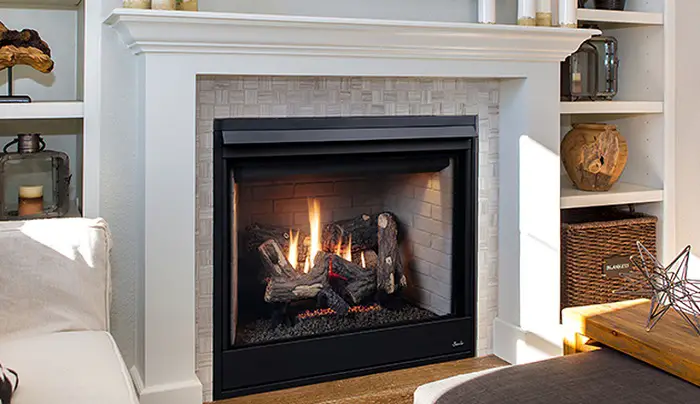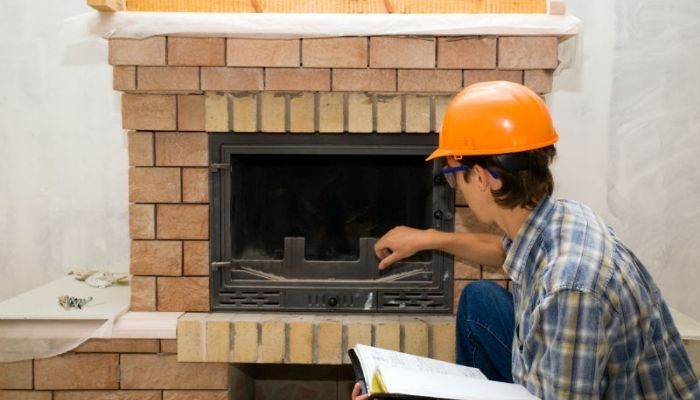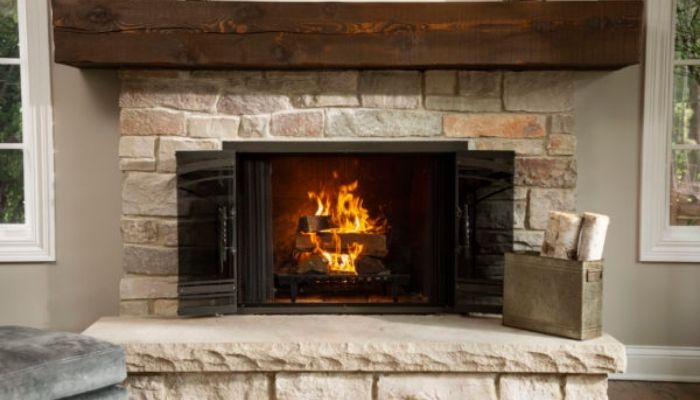Colder temperatures always mean you may have to spend more time indoors. It is during this time that you would also need a fireplace to keep you warm. It is possible to consider having a furnace or gas fireplace as the heating option.
These two will do a good job of keeping you warm. However, which is cheaper or efficient? That is what I want to discuss more below for you to understand the differences and which to pick.
Difference Between Furnace And Fireplace
It might be easy to be confused about these two considering they are both about heating your home.
The biggest difference is how the heating is done and the distribution of the resultant heat. Furnaces will mostly generate heat by gas supply and distribute this heat evenly in your home. A fireplace can be electric, wood, gas, or gel-powered and will circulate the heat to the room where it is set up and not the whole home.
Also, fireplaces tend to lose their heat especially if it is vented. We are talking of wood and gas fireplaces.
How Much Do Gas Fires Cost To Run Per Hour? Furnace vs. Gas Fireplace
Understanding how much each cost to run helps you pick the right one for yourself.
Starting with a gas fireplace, there can be many options in the market. But we will take one that can deliver up to 38,000 BTUs when it is fully on. This leads to a figure of 0.38 therms an hour that the gas fireplace is generating.
As of 2021, the price of natural gas was $8.87 per 1000 cubic feet. This equals around $0.85 per therm. So, anyone using a gas fireplace with a capacity of 38,000 BTUs, will be charged an average of 32 cents per hour to run it.
The gas furnace cost on the other hand will mostly be based on its Annual Fuel Utilization Efficiency or AFUE. When the AFUE is at 100 percent, then it means the furnace is converting all the natural gas into heat. However, we all know that is not the case. Modern furnaces have a high of 97 percent.
We can base our calculations on a model with an AFUE of 80 percent. These are the most common in the market. Such a furnace uses 750 therms per year leading to an annual cost of $750 on gas. This leads to 36 cents per hour for a gas furnace.
The U.S. Department of Energy right now requires residential gas furnaces to be AFUE 90 percent. This gives you an energy cost of 31.7 cents an hour with the AFUE 95 percent models working at 30.5 cents per hour.
That is just what you can expect to spend in an hour. However, furnaces will run for longer because they have to keep the whole house warm unlike when running a fireplace which will be in a single room.
You may spend an average of $8 to $19 on gas fireplaces per month and $12 to $45 per month on gas furnaces.
Below are other factors that can determine the cost of running the furnace or fireplace.
- The outside temperature
- The market price of gas
- How long you need the heating to go on
- Overall heat loss and efficiency of the appliance
Does Gas Fireplace Save Money?
Looking at our figures above, we can say that a gas fireplace can save you some money considering you might not have it ON all the time as compared to a furnace that you need for the whole house.
Still, the cost of acquiring a fireplace is cheaper than a furnace. Furnaces involve a lot of masonry work to ensure you get the heat to the different parts of the house. As for a fireplace, it does not need all that work thus it becomes cheaper to set it up.
Conclusion: Is A Ventless Gas Fireplace More Efficient Than A Furnace?
A gas furnace will be more efficient than a gas fireplace. This is because it comes with less heat loss and will circulate the heat around the home better than the fireplace. Also, a fireplace can only increase the house temperature by 14 to 24 degrees F. This might not be the best for colder climates that need more heat. As such, gas fireplaces would mostly be used as supplements to furnaces in colder regions.


